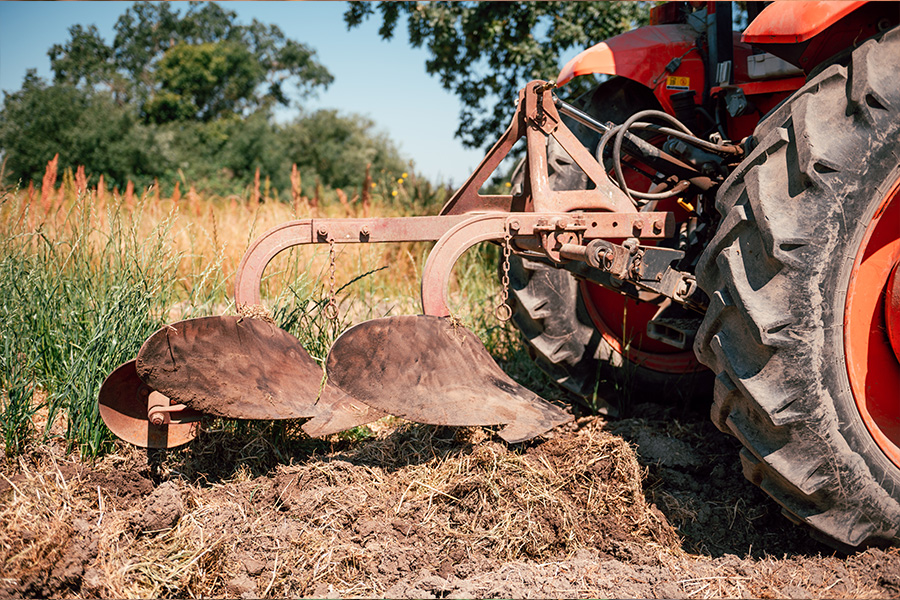Mechanical cultivation tools are more commonly used for larger-scale operations and can significantly reduce the time and labor required for weed control. Here are a few examples of commonly used mechanical cultivation tools:
- Rear-Mounted 3 Pt Hitch with Toolbar:
This setup involves attaching a rear-mounted toolbar to a tractor’s 3-point hitch. You can attach various tools like hilling discs, sweeps, and knives to the toolbar depending on crop height and weed pressure. Rear-mount toolbar systems are cost-effective (typically less than $1500), allow for easy tool swapping and adjustments, and are relatively simple to use. Efficient mechanical cultivation requires a tractor operator who can drive slowly and maintain a straight path. For larger operations, multiple toolbar systems mounted together, known as “sleds,” are sometimes used to cultivate multiple beds simultaneously (usually three beds at a time). - Finger Weeder:
The finger weeder is a specialized mechanical cultivation tool used to eliminate weeds within the crop rows. We employ the Kult Kress finger weeder, which consists of plastic “fingers” mounted on small spinning disks, along with sweeps. During the pre-emergence, cotyledon, or first true leaves stages of crop growth, the finger weeder effectively eradicates in-row weeds. Proper use of the finger weeder requires strict adherence to the “weed early, weed often” principle. A thorough and timely application of the finger weeder can significantly reduce the need for hand cleanup. Some crops may not require any manual weeding after comprehensive and timely use of the finger weeder.
Factors to Consider for Effective Cultivation
- Precision and Efficiency:
Mechanization in cultivation requires preceding steps such as field leveling, straight and level beds, and precision planting. Laser leveling fields and ensuring straight lines during bed shaping and transplanting are essential to maximize the effectiveness of cultivation tools. - Plastic Mulch Option:
Some growers opt for a plastic mulch layer to minimize the need for cultivation. While it does not entirely eliminate weeds, it significantly reduces weed growth, especially within the planting holes and bed shoulders. However, manual weeding may still be necessary for areas not covered by plastic mulch.
Cultivation is a crucial aspect of weed management in crop production. Whether employing hand tools or mechanical implements, effective weed control promotes crop health, uniform ripening, and reduces pest risks. Consider factors such as acreage, labor availability, and cost when choosing the appropriate cultivation method. Select the right tools, practice early and frequent weeding, and adapt your cultivation strategy based on the specific requirements of your crops. By implementing a well-planned cultivation approach, you can maintain a clean and thriving field, ultimately leading to better yields and improved crop quality.
